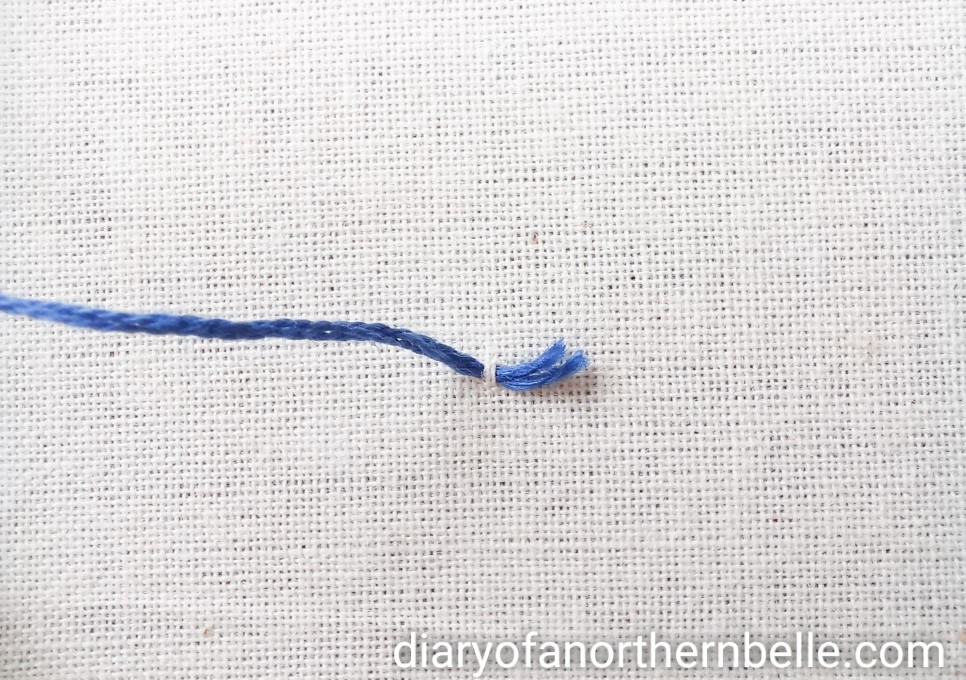Who here hates bullion knots? There’s absolutely no shame. They are a beast.

I used to not even like the finished look of them, but I do know. They’re amazingly textured and three-dimensional and really bring the embroidery game to the next level. BUT.
THEY ARE SO ANNOYING TO STITCH.
Admittedly, I haven’t tried very hard. I have a skin condition called hyperhidrosis that makes me sweat from the hands uncontrollably. It’s like having a faucet that never turns off. It doesn’t matter if it’s cold and I’m at my most relaxed, I will still sweat. This makes embroidery very difficult sometimes, but it makes certain stitches pretty much impossible. The bullion knot is one of them. It can be hard enough for dry-handed stitchers, but with sweaty hands, boy oh boy! I don’t recommend AT ALL.
So needless to say, I gave up pretty fast when I tried it. I was also in a huge rush, because the project I was working was a Christmas gift and Christmas was coming SOON. I picked a project that had about 300 bullion knots and I had never worked with them.
Why did I do this to myself, you ask? Great question.
To be fair, I didn’t count them beforehand. I honestly didn’t think it could be that bad, and I really wanted to stitch the beautiful lilac branch from Carol Andrews’s Embroideries From an English Garden. I also like a good embroidery challenge. (You can find the full blog post on this project and its inspiration from Jane Eyre here.)


But after spending 15 minutes on one bullion knot with my sweaty hands that made the thread impossible to glide through the coil, I was ready to give up. I seriously considered stitching the lilac flowers in a completely different way. But after playing around for a bit, my sweating intensifying with every passing second as Christmas drew closer, I found an incredibly easy way to achieve the bullion knot look without actually stitching a bullion knot.
Amazingly Easy Bullion Knot Hack
Alright, so the traditional way to make a bullion knot is to wrap your thread several times around the needle shaft, tightening it with one hand to create a coil, and then pulling the needle through the coil with your other hand. It’s a stitch that takes a lot of practice, but it’s definitely possible and the results are worth it. But sometimes, sometimes you just can’t. And that’s okay, because there is ANOTHER WAY. A MUCH, MUCH EASIER WAY.
Begin by threading your needle and see this post on how to best anchor the thread to begin your stitches. Once you’re ready, bring your needle up from the back and make a straight stitch the size you want your bullion knot to be.

Come back up in the same hole (or very near) where you first came up to make the straight stitch (point A).

And this is where the magic happens. Slide your needle under the straight stitch and wrap your thread around it repeatedly, until it is all covered. Wrap it tightly, and guide it with the tip of your needle if need be (sometimes the wraps tend to pile on top of each other).



When you get to the end, go back at point B, either in the same hole or just besides (it’s a bit more secure to go just besides).

Sometimes the bullion knot will be a little loose from all the wrapping, but that’s ok. Place it however you want it to lay, and make a small anchoring stitch in the middle to hold it in place. It’ll blend in with the wraps.


AND THERE!!!! Isn’t this so much easier than the traditional method? And it LOOKS THE SAME, but it’s so much less aggravating!! No one needs to know it’s not an actual knot. 😉 This is the method I used for my lilac branch project and it worked so well and I was so pleased with the result!!

What do you think? Are you a fan of bullion knots in general? Leave me a comment if this tutorial was helpful to you!
Fondly,





























































































































